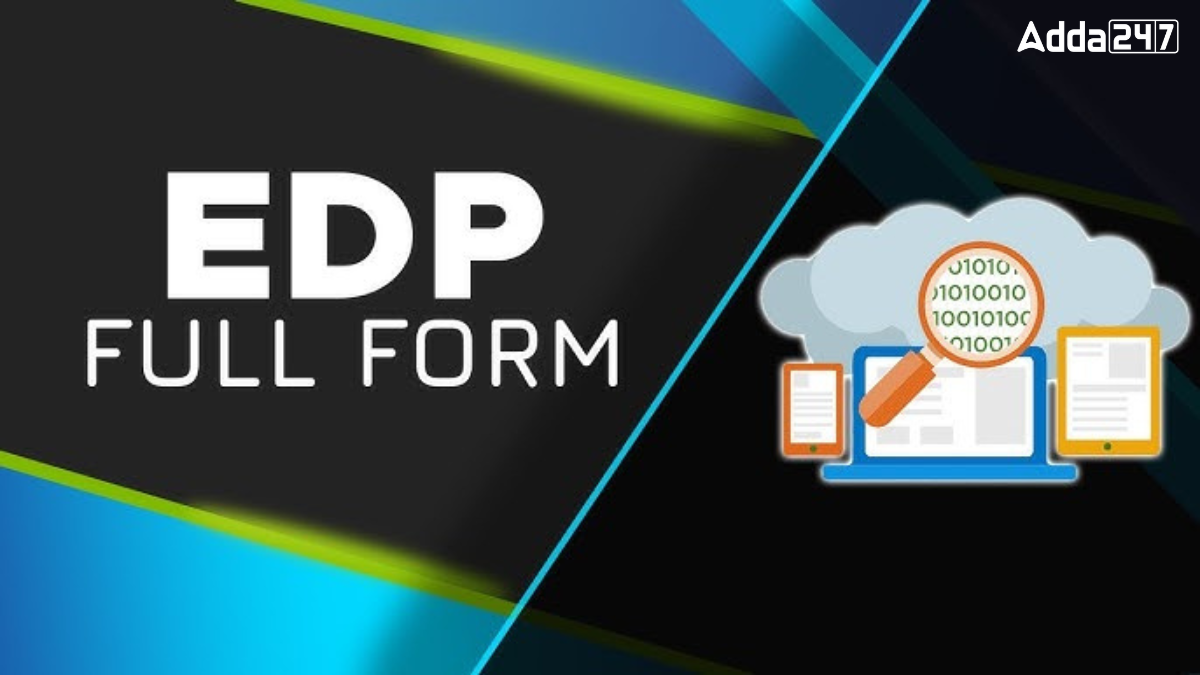Electronic Data Processing (EDP) is the use of computers to process information automatically. It helps businesses handle large amounts of data, store records and generate reports. The term “Data Processing” (DP) is the base foe EDP. It is similar to Information System (IS) and Management Information Systems (MIS).
Full Form of EDP
The full form of EDP is Electronic Data Processing. It means using electronic devices, mainly computers, to handle and process data automatically.
What is EDP?
Electronic Data Processing is the method of using computers to process data. This includes collecting, storing and analyzing information to make business operations smoother. It helps in tasks such as:
- Managing financial records
- Processing payroll
- Tracking customer order
- Analyzing data for decision-making
History of EDP
Electronic Data Processing (EDP) began in 1951 with the first commercial business system, LEO (Lyons Electronic Office), in the UK. At that time, data was processed using punched cards and tapes, which was slow and required manual effort. Later, companies improved technology, making data processing faster. The invention of microprocessors replaced punched cards, allowing computers to store and process information digitally. Today, EDP is widely used in businesses for last and accurate data management.
Why was EDP Developed?
Before computers, data was processed manually, which took a lot of time and had many errors. EDP was developed to:
- Increase efficiency: Computers can process large amounts of data quickly.
- Reduce errors: Automated systems are more accurate than manual calculations.
- Improve data security: Digital storage protects data from damage and loss.
- Support decision-making: Analyzing data helps businesses and organizations make better decisions.
Types of Electronic Data Processing
There are different types of EDP based on how data is processed:
Batch Processing
- Data is collected and processed in batches at a specific time.
- Example: Payroll processing at the end of the month.
Real-Time Processing
- Data is processed immediately as it is entered.
- Example: ATM transactions and online shopping payments.
Online Processing
- Data is processed while the computer is connected to a network.
- Example: Online banking and ticket booking.
Transaction Booking
- Each transaction is processed separately as it happens.
- Example: Credit card payments and order placements.
Data Warehousing
- Large amounts of data are collected and stored for future analysis.
- Example: Sales records of a company for performance review.
Functions of Electronic Data Processing
EDP Systems perform various important functions:
- Data Entry: Entering data using a keyboard, scanner or other input devices.
- Data Storage: Saving data securely in databases or cloud storage.
- Data Retrieval: Finding and accessing stored information easily.
- Data Analysis: Identifying patterns and trends in data.
- Data Communication: Sharing data over networks and the internet.
- Data Security: Protecting data from hacking and unauthorized access.
Uses of EDP
EDP is used in many industries:
Business
- Keeping financial records
- Managing inventory
- Tracking customer order
Government
- Maintaining tax and citizen records
- Processing benefits and pensions
- Managing public services
Education
- Storing student records
- Managing examination results
- Online learning and library systems
Healthcare
- Keeping patient records
- Scheduling appointments
- Processing medical insurance claims
Retail
- Managing stock and sales
- Processing online orders
- Analyzing customer preferences
Benefits of EDP
EDP provides several advantages:
- Faster processing
- Increased accuracy
- Better data management
- Cost-effective
- Improved security
Limitations of EDP
Despite its advantages, EDP has some limitations:
- High cost
- Complexity
- Technology dependence
- Security Risks
- Privacy issues



 GMT Full Form: Know Its Meaning, Formati...
GMT Full Form: Know Its Meaning, Formati...
 DNA Full Form: Know Its Meaning, Structu...
DNA Full Form: Know Its Meaning, Structu...
 What is the Full Form of FBI? Know Every...
What is the Full Form of FBI? Know Every...







